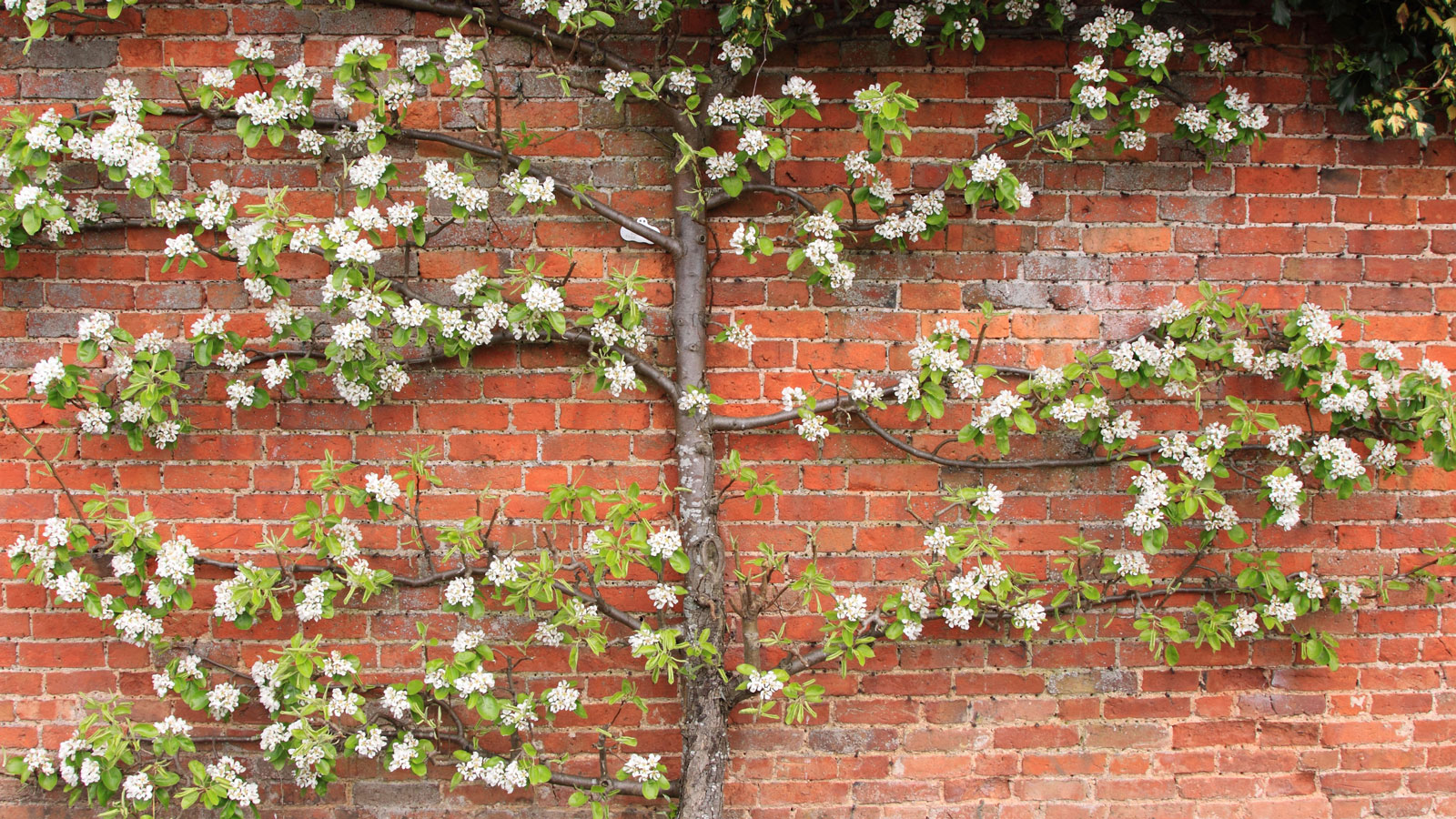
It sounds fancy and looks a bit complicated but all the term espalier means is the process of training trees and shrubs against a flat surface, such as a wall, fence or trellis, with branches tied in horizontally against the support in a pattern of your choice. This looks beautiful as the branches fan out on the wall and in addition a plant pruned this way uses far less space, which means it's ideal for small gardens and narrow spaces where trees that spread will not fit.
An espaliered design uses a main vertical stem from which side branches are trained in tiers to achieve the shape you want and it only takes a couple of years for the basic shape to get established, with more intricate designs taking longer. Another big plus is that an espaliered tree only requires light annual pruning to keep it in shape but it's important to do this to keep the structure looking good.
Some plants adapt better to the espalier technique than others, namely those with long, flexible branches and ornamental flowers or fruits. If you live in a cooler climate and plant against a south-facing wall that will radiate heat and provide shelter, this allows you to try out cultivars that might not normally be able to survive or fruit. Now find out 7 of the best trees to espalier if you love the idea of training trees in this way in a modern garden.
1. Apple
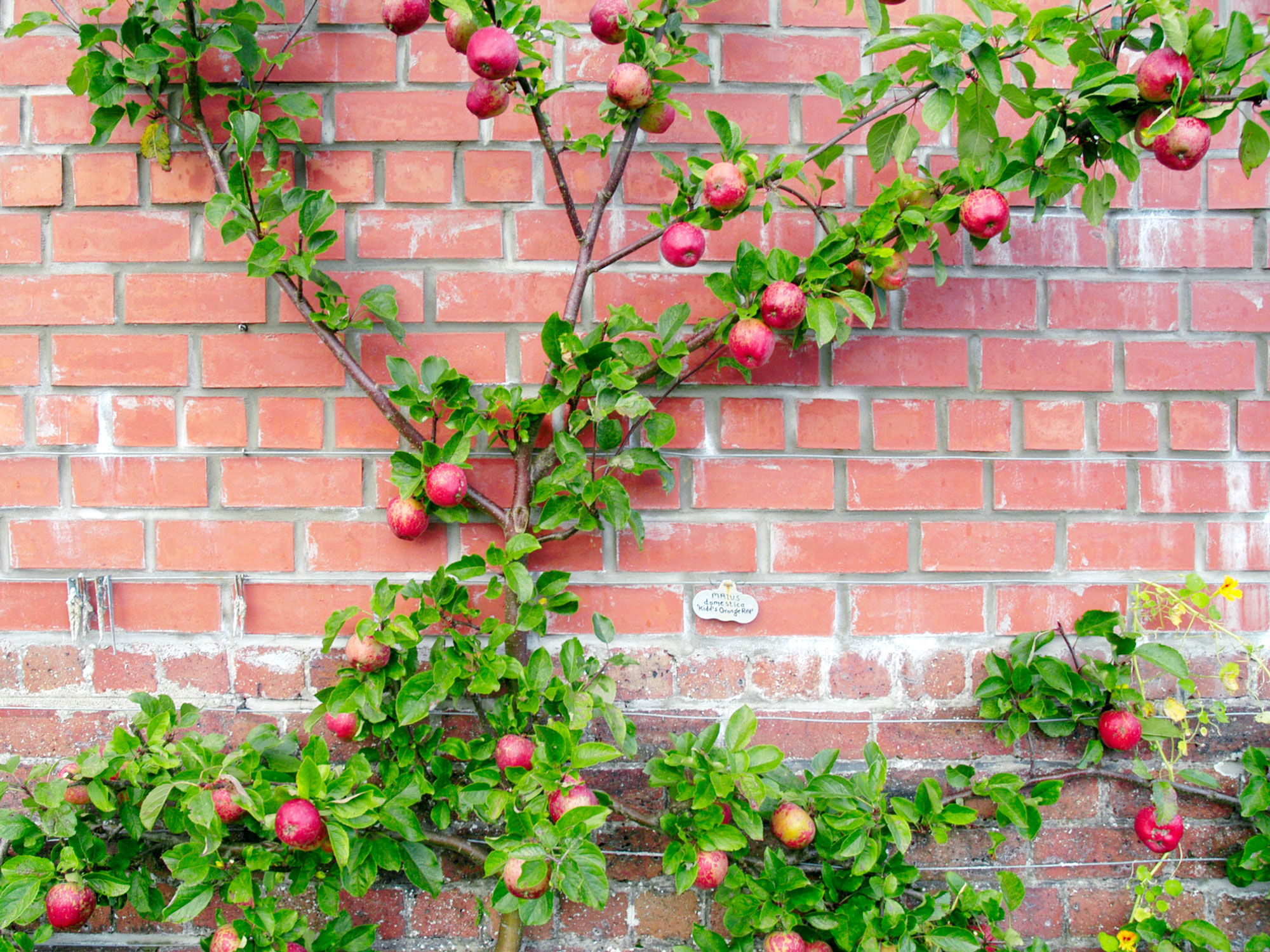
One of the most traditional and best trees to espalier, apple trees have supple, easily trained new growth. Many apple cultivars have 'spurs' (short branched shoots) that produce fruit for years once you have your design up and running.
'To develop your own espalier, choose a young tree without much branching, as this will require much less effort to manipulate,' says Susan Mahr, master gardener program co-ordinator at the University of Wisconsin-Madison. 'The main pruning is done annually in late winter/early spring when the plant is dormant to remove branches that don’t fit the plan. Growth is redirected by pruning to buds that face the direction you want the plant to grow. Branches are moved into place and tied onto the supports in spring and early summer, while branches are still young, soft and easy to manipulate.'
Look for spur-bearing cultivars by checking the plant’s label or online description before buying. Apple varieties that work well for espalier growing include Cox's Orange Pippin, Granny Smith, Gravenstein, Honeycrisp, Red Delicious, Rome, and Red Fuji.
2. Firethorn

Firethorn (also known as Pyracantha) has a showy abundance of red, orange, or yellow berries in fall and winter that is perfect for showing off in an espalier design. Once these shrubs get above a certain height they develop into small trees that are very easy to train and produce masses of side shoots along every branch. The shoots are extremely pliable and this means they can easily be bent into shape and twisted around wires.
They also have an abundance of flowers in late spring-early summer, which adds to the ornamental qualities of firethorn espaliers. In fact, because they're evergreen they add color, structure and interest all year round. The more tightly you clip them into shape the more they will reward you with flowers, berries and a shapely structure.
One thing to mention. When pruning an espaliered firethorn you'll need thick gloves, like these from Amazon, because of the thorns, but they do act as a deterrent to intruders as well as being one of the best trees to espalier.
3. Pear
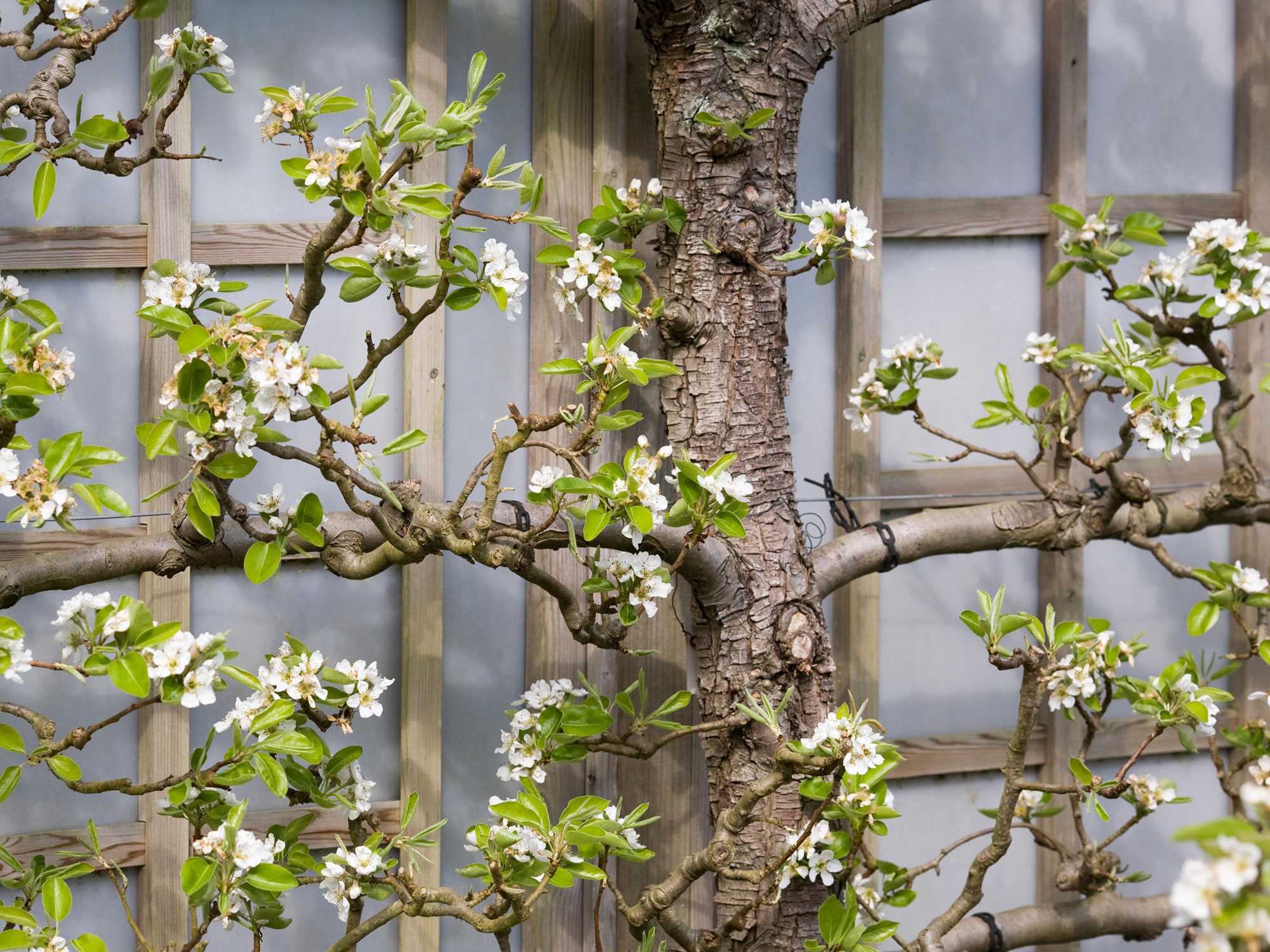
Another favorite fruit tree to espalier is the pear. One of the most popular pear varieties for espalier designs is 'Kieffer', a fast growing cultivar that is disease resistant too. Also, it does not require a pollinator to produce fruit and will usually fruit by its second season.
When you start growing espalier pear trees train the tree branches along the wires of a trellis as shown here. As the selected branches grow, tie them to the wires every six inches. 'The ties – of soft string, strips of rags, rubber grafting bands, plant ties, or raffia – should be checked every few months and loosened if restricting growth or damaging the branch,' says Susan Mahr. 'The ties are removed once the final form has been achieved.'
Keep up with espalier pear tree maintenance to keep your tree looking tidy. This means pruning back side shoots to about 6 inches on a monthly basis during the growing season. Remember if you prune too short, you will have less fruit.
4. Magnolia
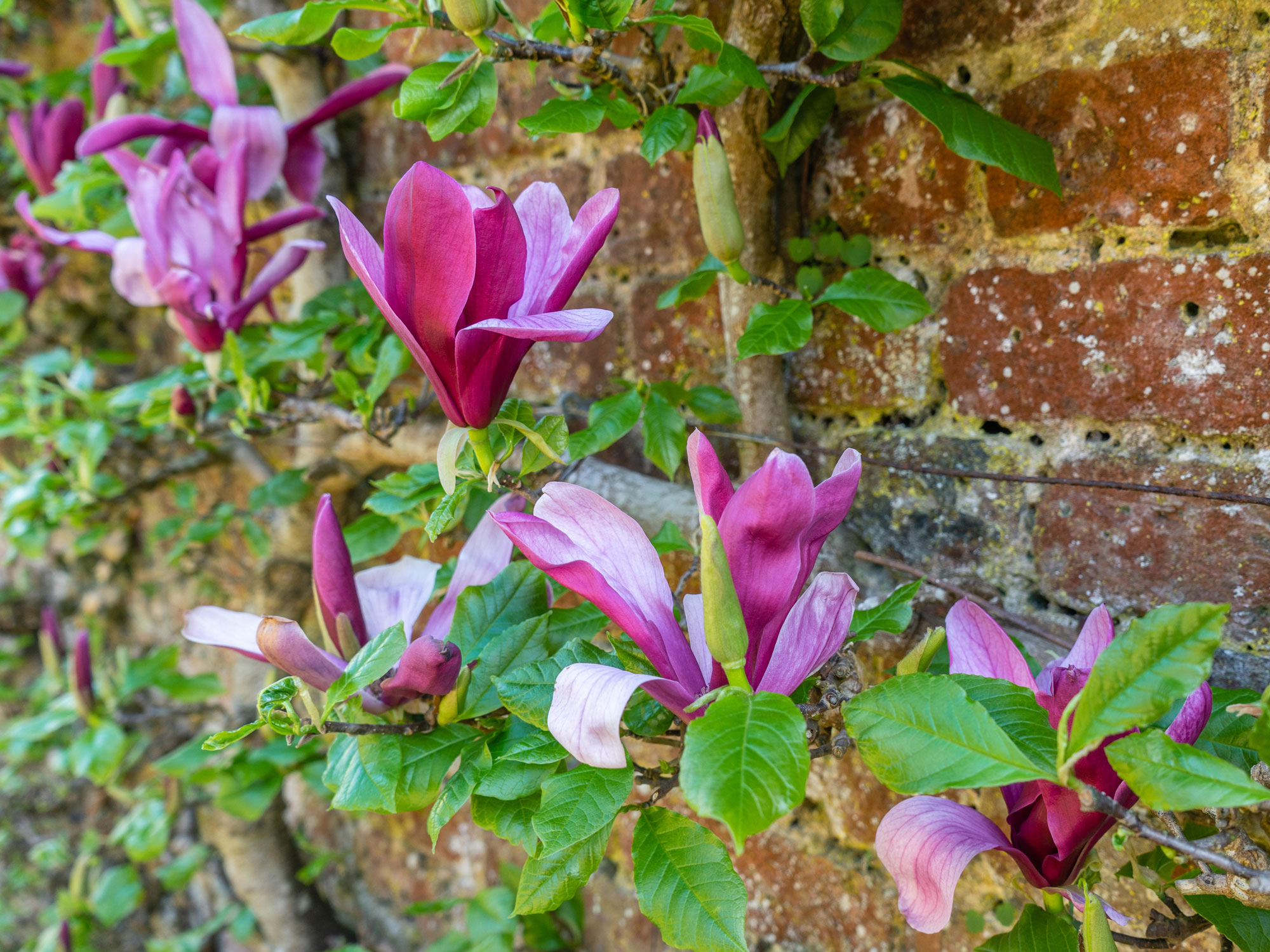
An espaliered magnolia tree is a great feature at the back of a planting bed, or to cover a wall or fence in city gardens. By training a fabulous, fragrant magnolia up a wall or fence, you can convert a dull or unsightly area into one of the most stunning features in your yard.
In general magnolias can be used in multiple ways as part of your garden design, and an espaliered magnolia tree will definitely provide plenty of color and blooms at eye level. While Southern magnolias, like this seedling from Walmart, shine when espaliered as their branches are more pliable you can train most types of magnolia to grow in this way.
You can pretty much pick the shape you want too. The best way to do a magnolia espalier is actually to put up your form on the wall or fence and string wire along horizontally to tie in the branches.
5. Plum
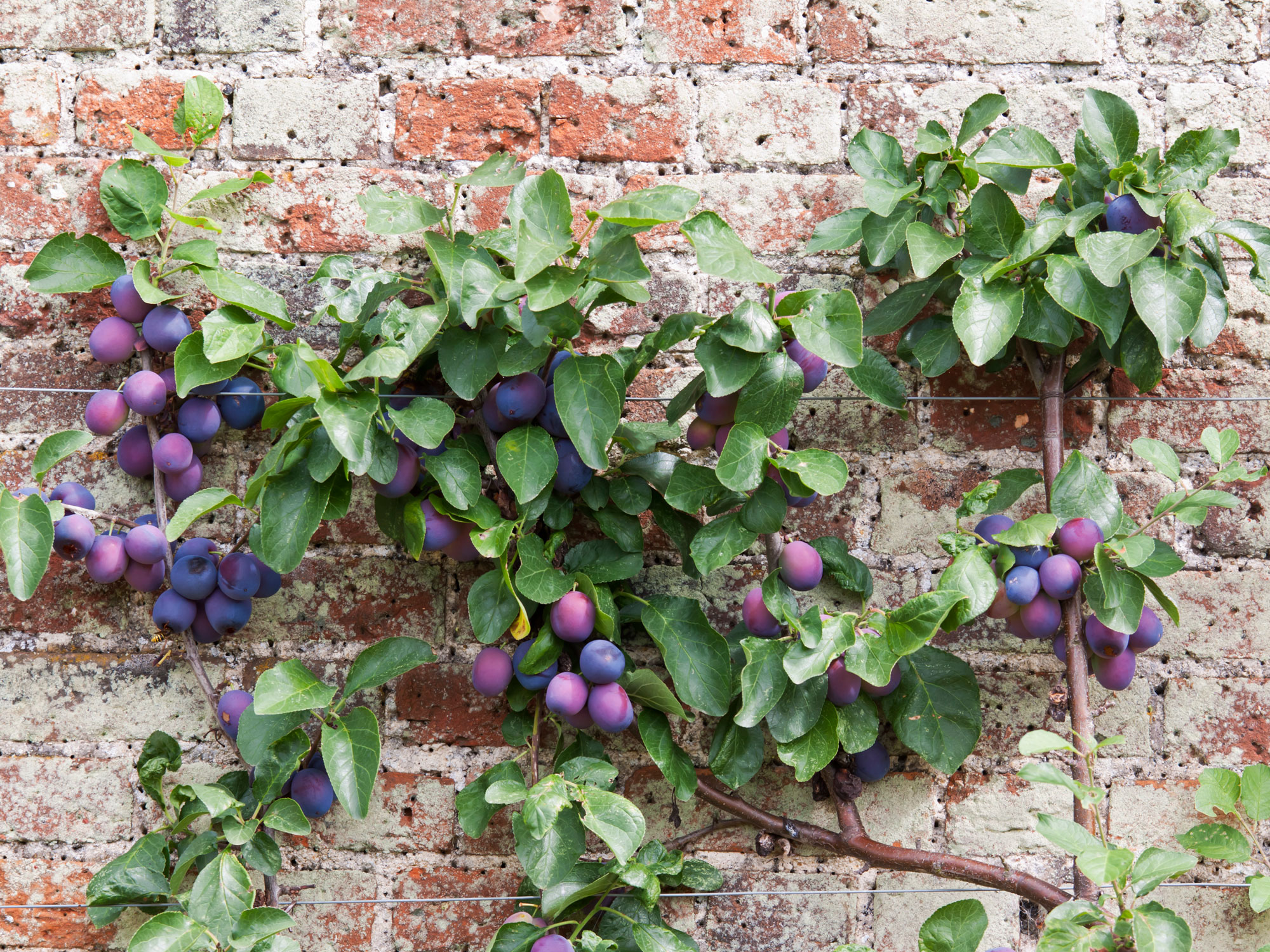
Plum trees are ideal for growing in a fan shape to hug a wall or fence. The additional shelter and warmth offered by growing a tree against such a structure means that your plum should have plenty of fruit. The wall should ideally face south or west for the best yield.
Once the desired shape is achieved, it needs to be maintained by regular minor pruning to remove all branches that are growing out of the pattern. 'Shape the plant every month or so, removing branches or twigs that aren’t in the correct plane of growth,' says Susan Mahr. 'Maintenance for espalier plants is the same as for normal plants of their type, except for the more regular pruning and shaping.'
Look also for prepared espalier trained plum trees from garden centers and specialist nurseries that come supported by their own espalier frame, so they are incredibly easy to plant.
6. Bay tree
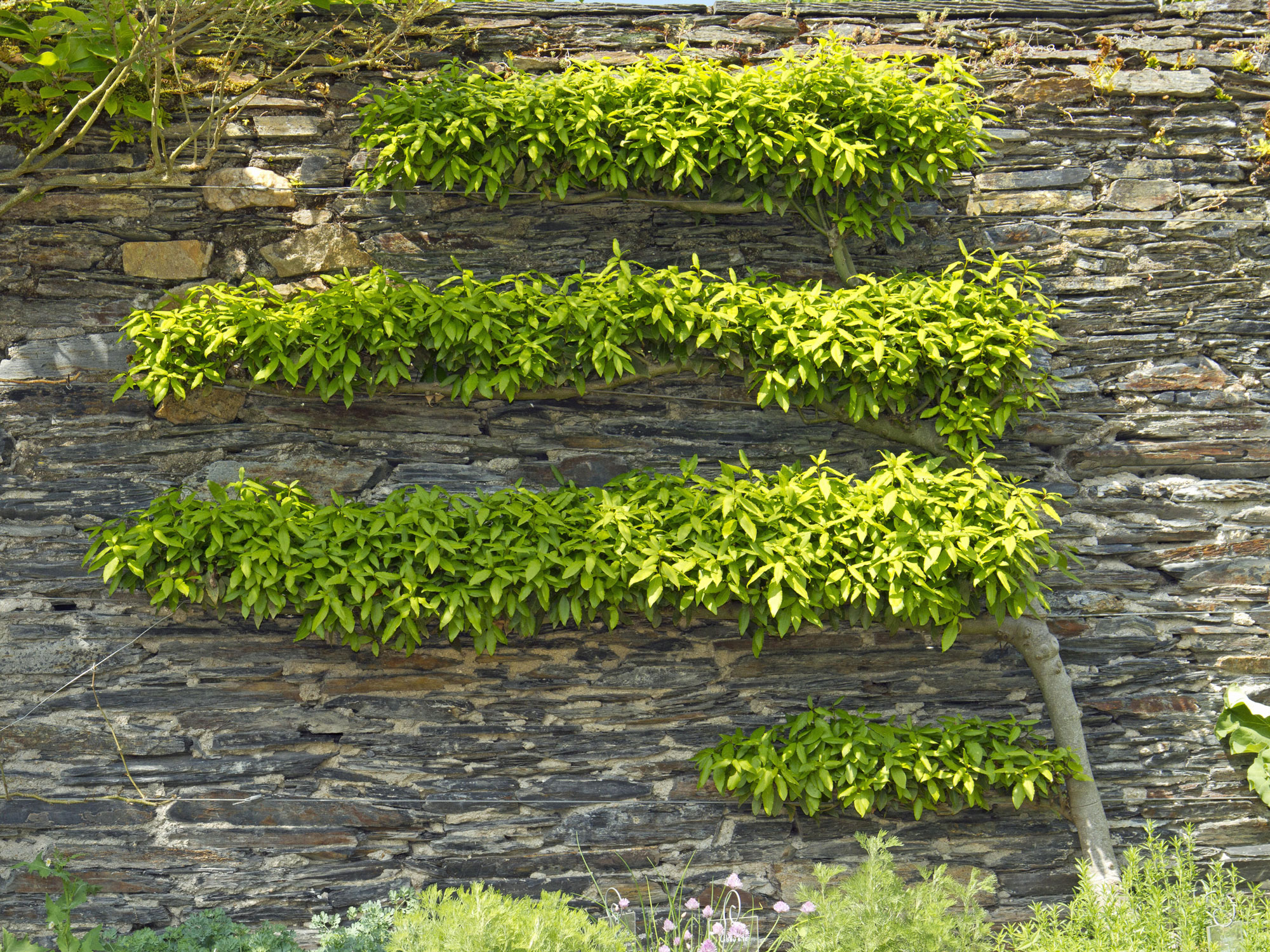
Bay is one of the best trees to espalier as it's evergreen and provides year round interest for walls and fences. The dark green foliage can be neatly clipped into an attractive look that holds its shape well. Prune in summer to encourage a balanced design and prune new shoots to a bud facing in the desired direction of growth.
The defining characteristic of an espalier is its flatness but beyond that there are many choices of shape and you can always come up with your own unique design as this tiered bay tree shows. Pruning can be as simple as removing anything that doesn’t fit your plan.
Once you have a picture of an espalier in mind, set up the wires or trellis in the desired shape to make life easier, then you can tie in branches as they grow and simply trim off anything that doesn't fit in with your plan.
7. Fig
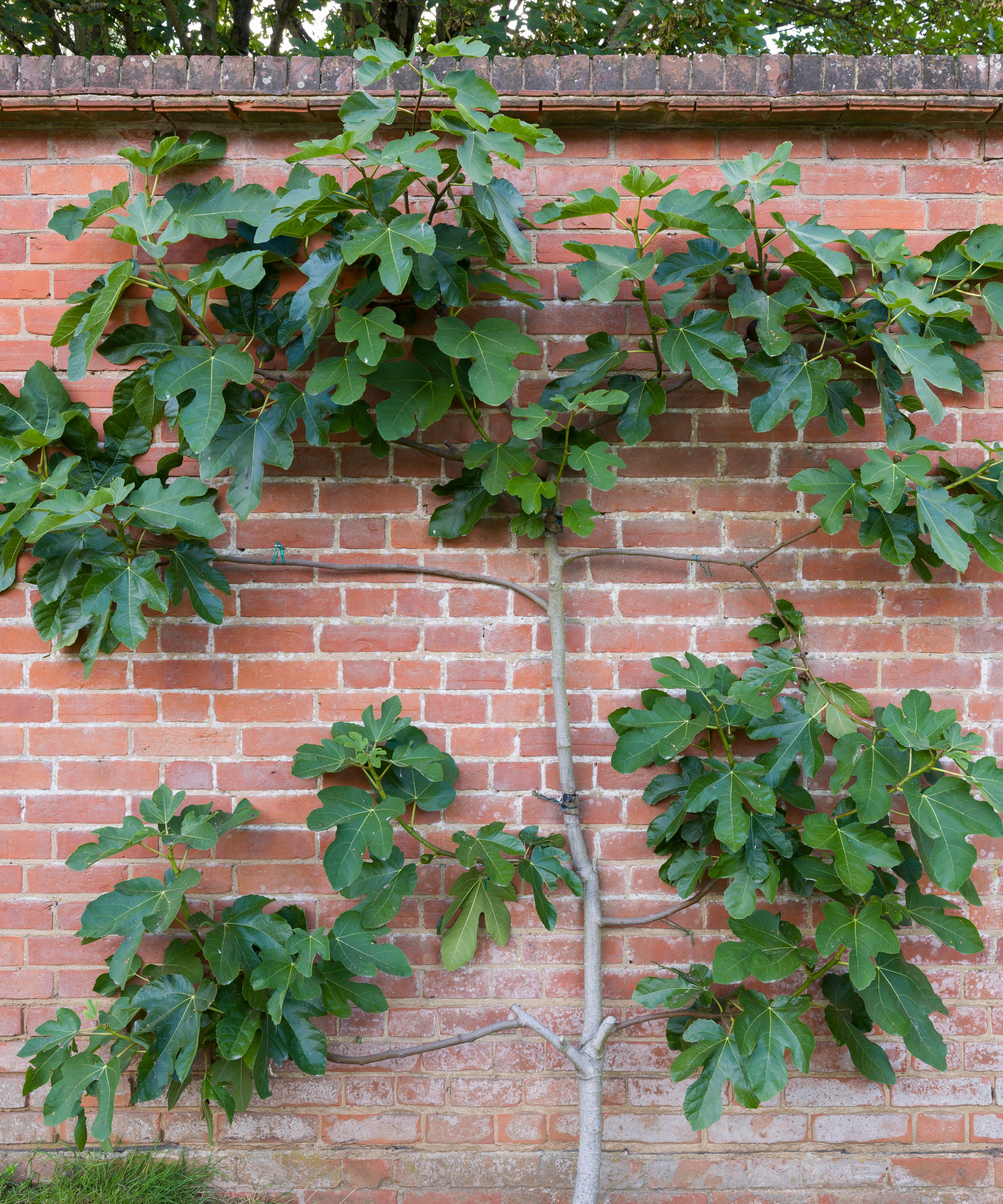
If you love the idea of growing a fig tree but your yard is too small consider this idea. If you have a clear section of south-facing wall or fence, you can create an espalier. The natural shape and pliable branches of a fig tree mean it's perfect for an espalier project. You can also choose a dwarf cultivar if space is an issue.
Fig trees are one of the best trees to espalier, especially if you like a leafy look. They love a sunny sheltered spot so train one against a warm south-facing wall and you will be rewarded with a plentiful supply of fruit. Fix horizontal wires in place in the desired espalier shape, and as the new branches grow, train them along these wires by tying them in.
Prune your espaliered fig in winter when the tree is dormant to stimulate spring growth. Prune again in spring to tidy up your fig into the desired espalier shape, and make sure it's following the wires. You will need to be patient as it can take three to four years to produce a beautiful espalier with a good supply of fruit but it will be well worth the wait.







